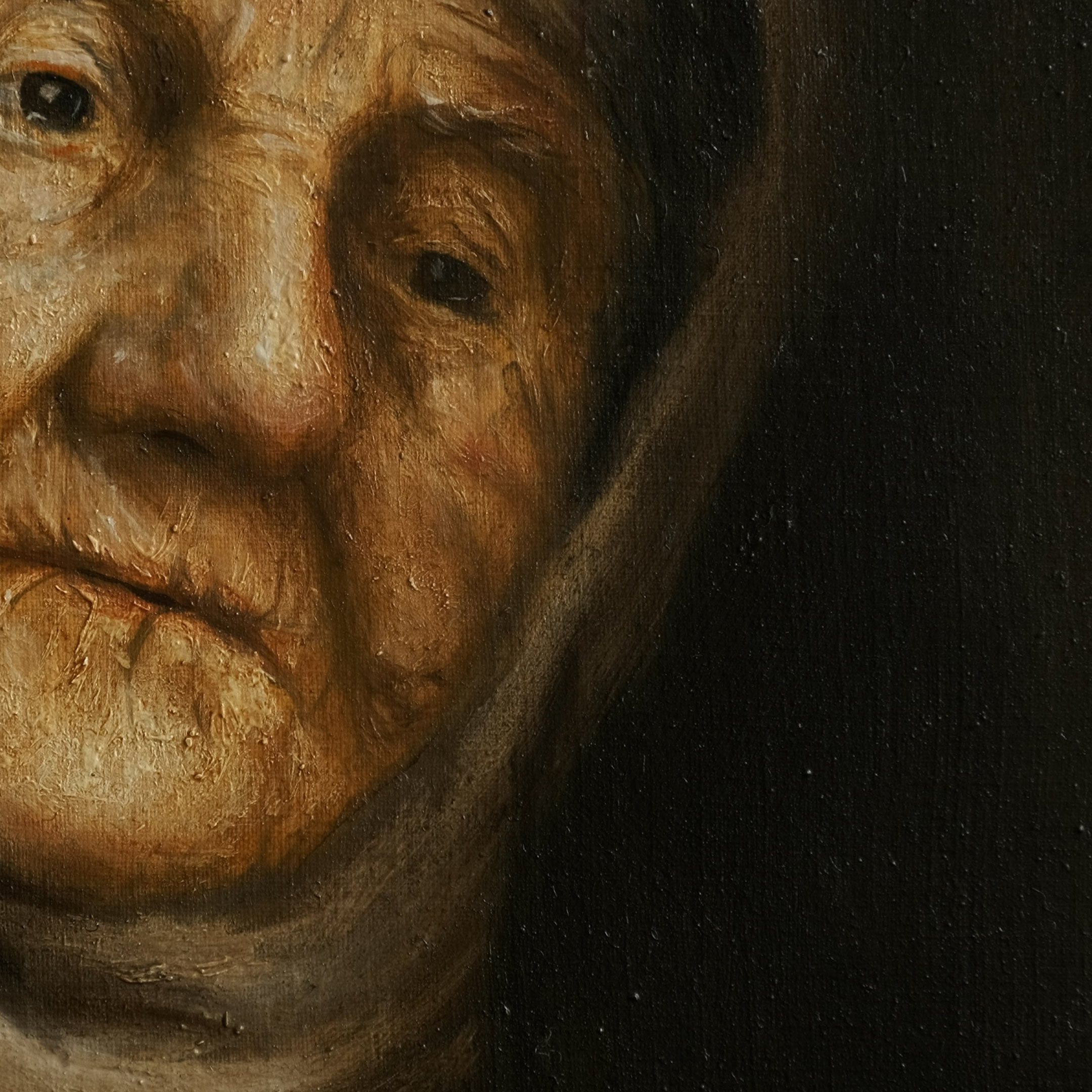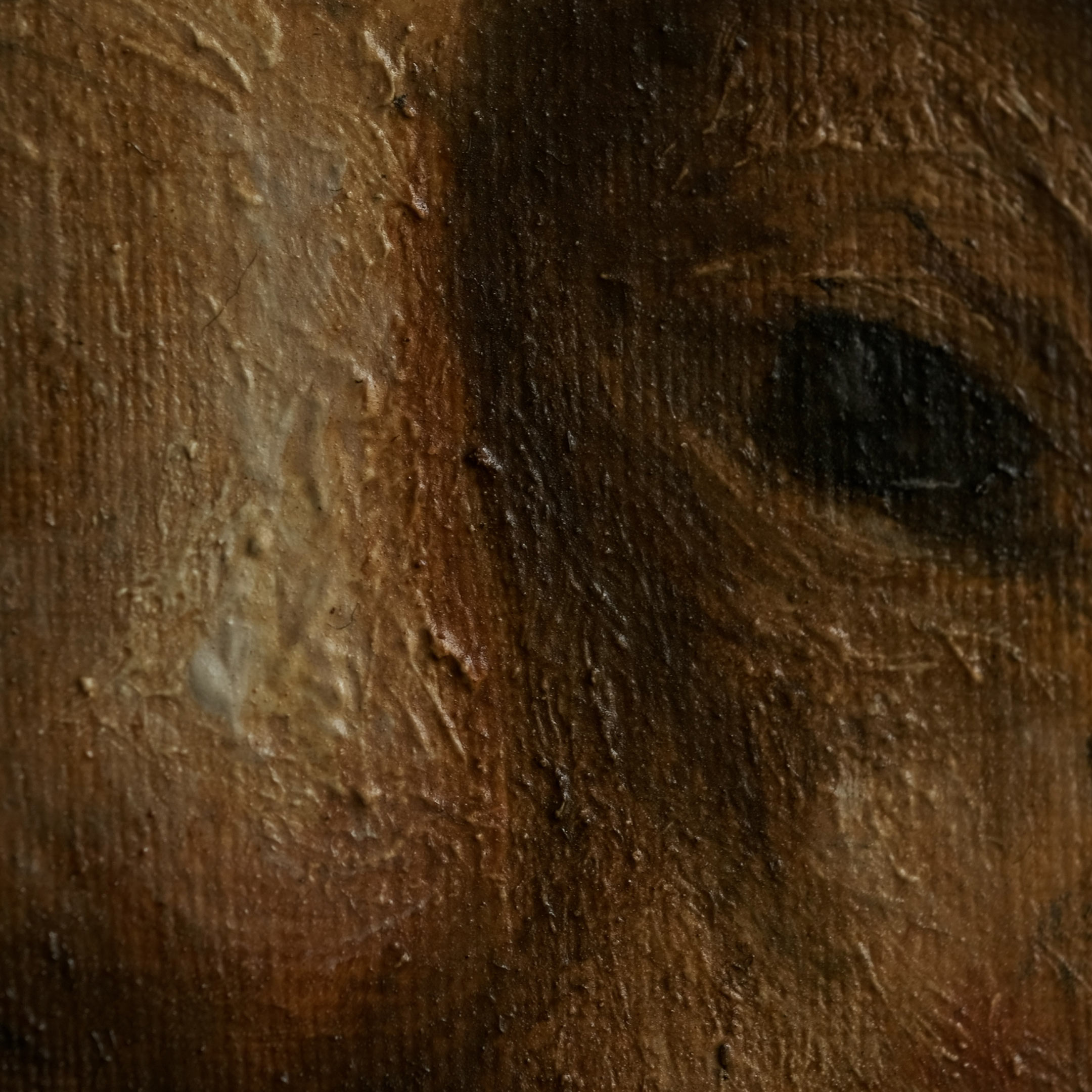Silence of Memory
Oil on Paper, Natural Pigments and Dutch Lead White — Old Masters Technique
This portrait was created using oil on paper, strictly adhering to the techniques and materials practiced by the Old Masters of the 17th century. The surface is a carefully prepared paper, primed with natural animal glue and chalk grounds to ensure proper adhesion and to achieve the subtle optical effects of deep, inner light so valued in classical painting.
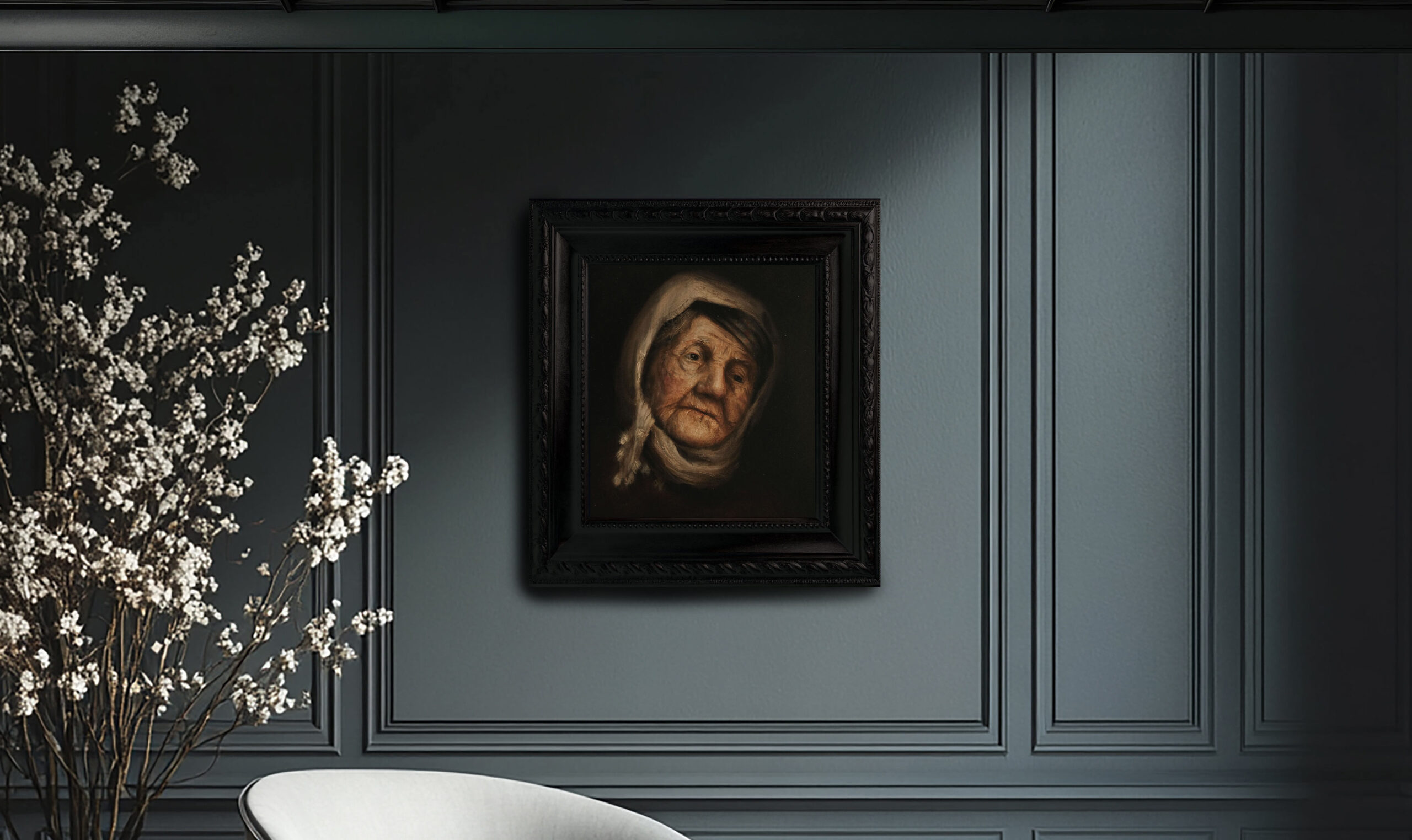
Silence of Memory Oil on Paper, Natural Pigments and Dutch Lead White — Old Masters Technique
This portrait of an elderly woman, humbly wrapped in a white scarf, was created as part of an artistic exploration rooted in the painting techniques of the 17th century — a time when artists like Rembrandt, Dou, and van Hoogstraten sought the universal in the intimate, and spiritual depth in the aging human face.
The pigments used are entirely natural and prepared by hand. Earth tones such as ochres, umbers, and siennas are ground in linseed oil, alongside custom-made black from charred organic matter. At the heart of the painting process is the use of lead white, created by the artist using the traditional Dutch "stack process." This centuries-old method involves exposing metallic lead to vinegar fumes and stable manure over several weeks, resulting in a pigment of unmatched density, warmth, and luminosity. Although now discontinued in commercial paint production due to its toxicity, handmade lead white remains irreplaceable in achieving the soft sculptural modeling and glowing highlights seen in the works of the Dutch Golden Age.
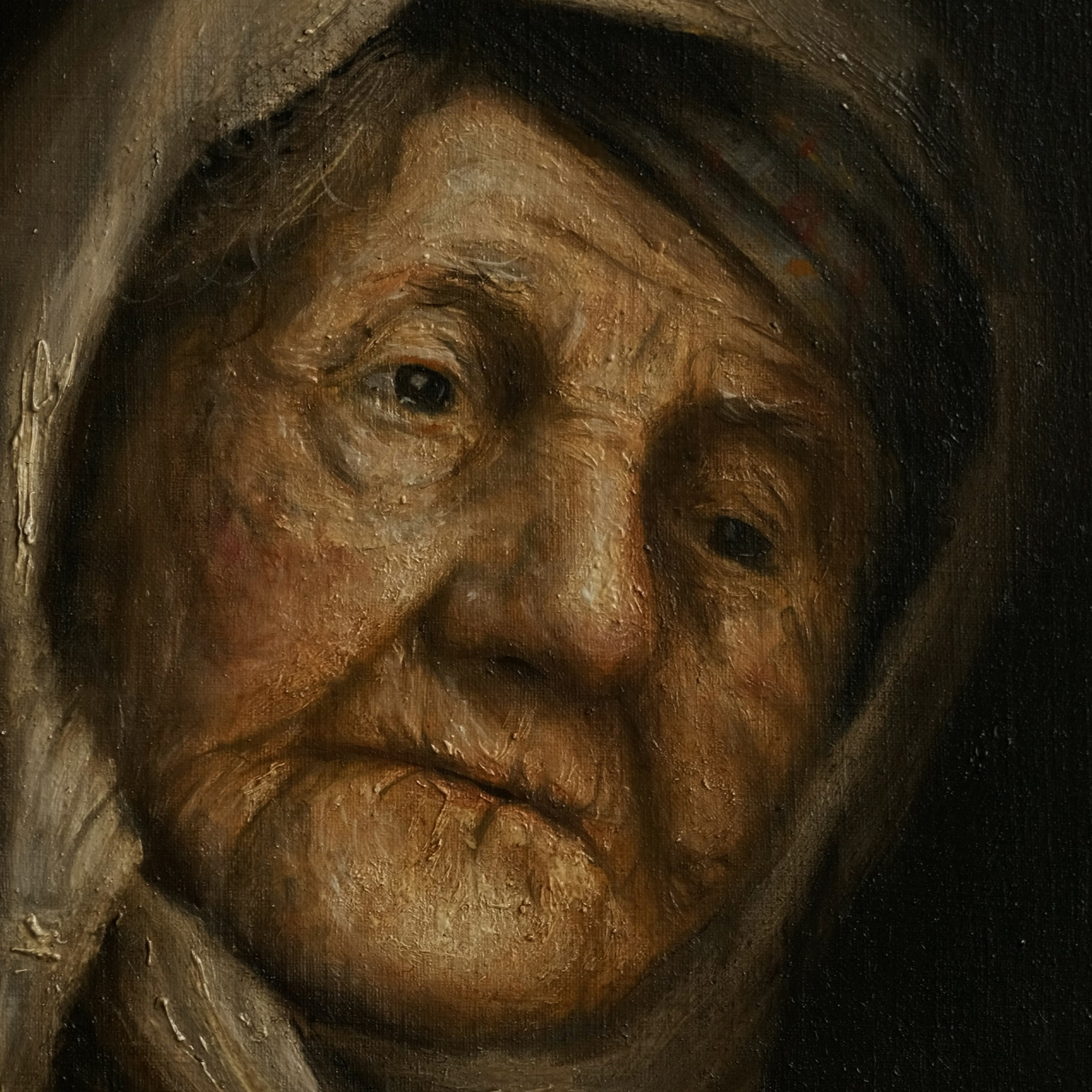
Multiple transparent and semi-transparent layers
The painting is built up slowly, in successive layers. It begins with a monochromatic underpainting — often in cool, earthy grays or browns — which establishes the values and structure of the composition. Transparent glazes and velaturas are applied over this base, obeying the traditional "fat over lean" principle, which ensures long-term stability and allows for light to pass through the upper layers and reflect off the lower ones, creating that distinct inner glow associated with masterful classical oil painting.
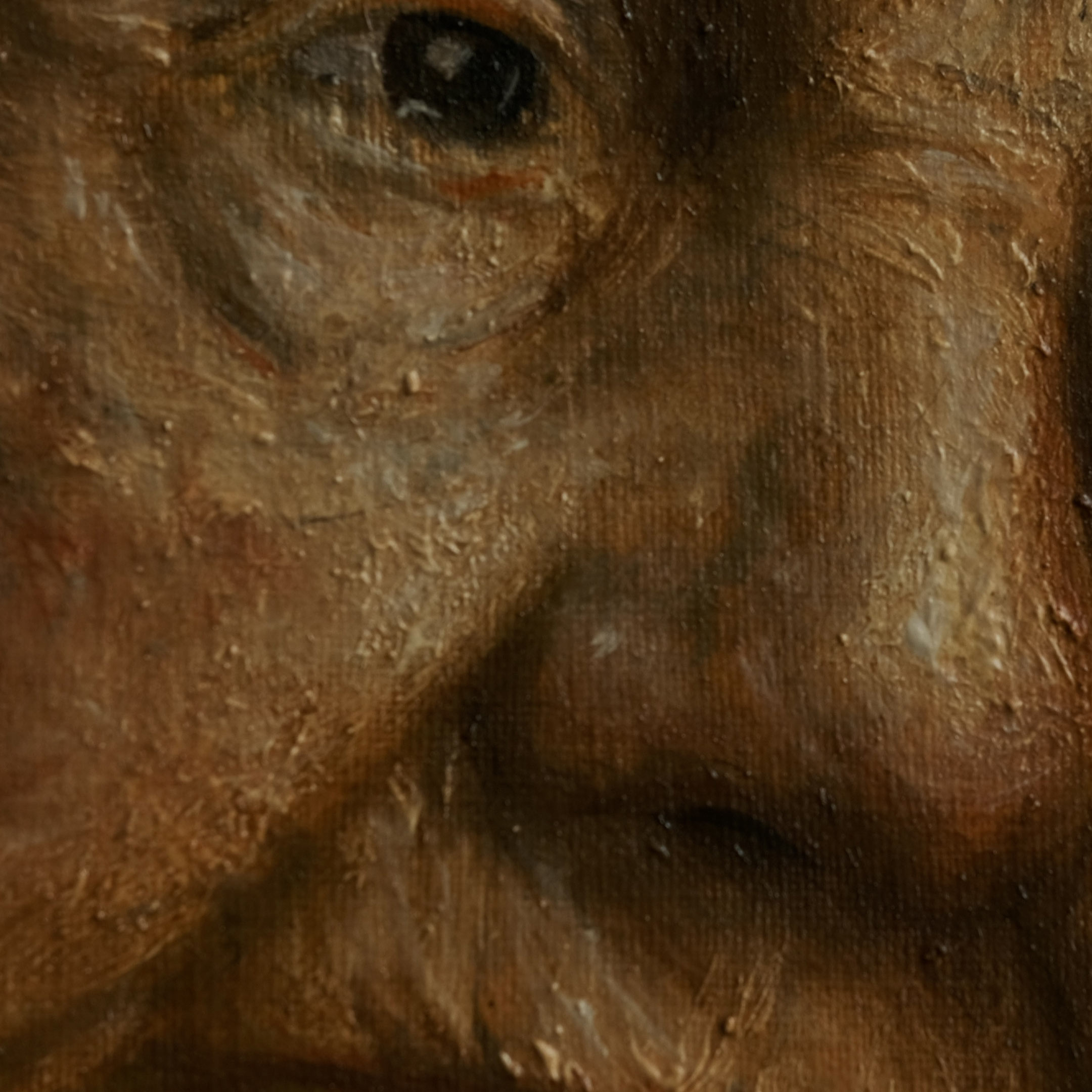
The subject herself is not merely a likeness of age — she is a vessel of memory, silence, and acceptance. Her downward gaze and the faint parting of her lips suggest contemplation rather than sorrow. The scarf, painted with restrained brushwork and delicate tonal transitions, becomes a symbol of humility and introspection. This is not a sentimental view of aging, but a quiet confrontation with mortality — one marked by dignity, grace, and the richness of a life fully lived.
In both execution and intention, this work pays homage to the timeless humanism of the Old Masters, and to a view of painting as something more than representation — as a spiritual act, a meditation on the transient beauty of life, and the stillness that precedes eternity.



